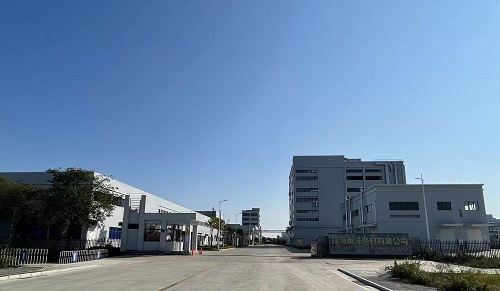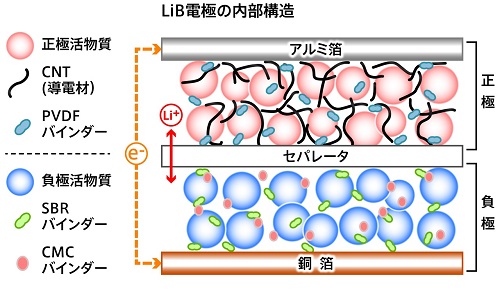Business/Products
TOYOCOLOR CO., LTD.
Chinese EV Battery Maker To Adopt Toyocolor’s Battery Materials
March 15, 2023, Tokyo, Japan (This is a revised version of a press release that was originally issued on February 13, 2023). —Toyocolor Co., Ltd., the colorants and functional materials arm of the specialty chemicals company Toyo Ink Group of Japan, today announced that the company’s Lioaccum™ conductive carbon nanotube (CNT) dispersions has been selected by a Chinese automotive battery manufacturer for use in next-generation high capacity li-ion batteries (LiB). Lioaccum CNT dispersions are scheduled for installation into mass-produced vehicles beginning 2024.
With governing bodies around the world tightening emission restrictions on gas-powered vehicles in an effort to achieve carbon neutrality, the percentage of EVs in the new vehicle market is expected to jump from 8% in 2022 to 30% in 2030. China’s EV market, one of the three largest automobile markets in the world, is broadly divided into the sub-markets of budget models for running short distances and high-end models that require longer cruising ranges. High-capacity LiBs are critical to extending cruising range for high-end vehicles.
The Lioaccum dispersion adopted by the Chinese battery manufacturer is a key material that contributes to the expanded capacity and energy density of LiBs through the adoption of highly conductive CNTs. While the stable distribution of high-performance carbon nanotubes was once considered difficult to accomplish, Toyocolor succeeded in applying its proprietary dispersion technology to overcome technical hurdles and achieve highly stable CNT dispersions of high quality.

In line with this battery maker’s supply needs, the Toyo Ink Group will be expanding the capacity of its dispersion production base, Zhuhai Toyocolor Co., Ltd., in Guangdong, China. Lioaccum dispersions manufactured here are expected to be incorporated into mass-produced vehicles beginning 2024.
About Lioaccum™ CNT dispersions
Toyocolor, whose core competency is carbon dispersion, has been supplying carbon black dispersions for LIB cathodes since 2015. LIB cathodes consist mainly of active materials, conductive materials and a binder. By substituting CNTs for carbon black as the conductive material, Toyocolor was able to achieve conductive performance with a nominal amount of material.
Toyocolor has been developing high-performance CNTs in collaboration with CNT manufacturers. The company applies its proprietary additives and dispersion manufacturing methods to dramatically increase CNT dispersibility and conductivity. This allows battery producers to significantly lower the internal resistance of LIB cathodes with a smaller amount of conductive material. These technical advances not only lower the cost of materials used in battery manufacturing, but it also leads to increased levels of active materials in the cathode, thus making it possible to boost battery capacity, extend EV cruising range and improve EV rapid-charge performance.

<Related releases>
■ LiB materials adopted by SKI and supply started to Volkswagen and Ford
https://schd.toyoinkgroup.com/ja/news/2021/21070801.html
■ Established second base in North America for conductive CNT dispersions for lithium-ion battery cathode materials
https://schd.toyoinkgroup.com/ja/news/2023/23021301.html
TOYOCOLOR, TOYOCOLOR logo, and LIOACCUM are trademarks or registered trademarks of TOYO INK SC Holdings Co., Ltd.
###
Inquiries
TOYOCOLOR CO., LTD.
Functional Materials Division
Person in charge: Obata
TEL: +81-3-3272-0956
Press inquiries
TOYO INK SC HOLDINGS CO., LTD.
Corporate Communication Department
TEL: +81-3-3272-5720
MAIL: info@toyoinkgroup.com

Adobe Reader is required to view PDF files.
